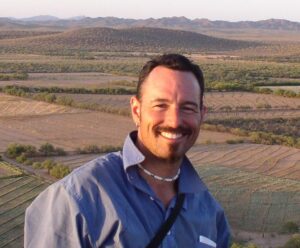
Dr. James Watson, Curator of Bioarchaeology (Arizona State Museum) & Professor of Anthropology (School of Anthropology), University of Arizona
Monday, August 8, 2022,
2:30-3:30 pm,
The ASA Koffler Great Room
The “Man the Hunter” hypothesis–the idea that when early human groups sought food, men hunted and women gathered–has long been the dominant perspective when interpreting patterns in the archaeological record throughout our evolutionary history. However, evidence has been building over the last several decades that this perspective may be inaccurate.
The 2018 discovery of the earliest female hunter burial in the Americas at the high-altitude site of Wilamaya Patjxa in Peru hinted that female participation in early big-game hunting may have been a common occurrence. Examination of published archaeological records of late Pleistocene and early Holocene burials for 429 individuals from 107 sites throughout the Americas identifies that of the twenty-seven individuals associated with big-game hunting tools, nearly half were female. In contrast to individual-focused hunting common to later prehistoric periods, communal hunting large game would have encouraged contributions from the entire community including males, females, and children for both driving or killing large animals. This talk describes existing gender biases in interpreting the archaeological record and recent discoveries that challenge the dominant paradigm.
James T Watson received his PhD from the University of Nevada Las Vegas in 2005 and joined the faculty at the University of Arizona in 2008. His research examines health and disease in prehistoric populations through their skeletal remains. He is specifically interested in understanding prehistoric human adaptations in desert ecosystems and the role local resources play in the adoption of agriculture and their impact on health.
Preview supplied by James Watson
